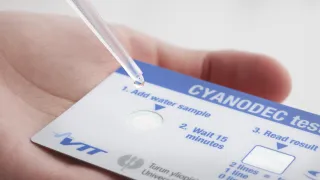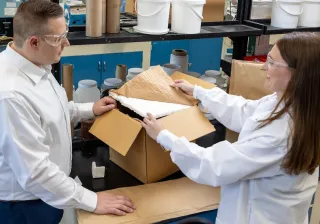Salofa Oy will commercialise the blue-green algae (cyanobacteria) test originally developed by the VTT Technical Research Centre of Finland and the University of Turku. Salofa intends to bring the easy-to-use quick test to the Nordic consumer market first, during 2017. Soon ordinary customers will be able to check that the water at their beach is free of cyanobacteria toxins.
The single-use cyanobacteria test requires only a few drops of water and indicates the result within 15 minutes. If two red lines appear on the display, the water contains cyanobacteria toxins. One line means that the water sample is toxin free.
The quick test can identify the presence of the most common cyanobacteria toxins, such as microcystins and nodularins.
Toxins are present in approximately every second blue-green algae bloom and you cannot detect by visual inspection alone whether the cyanobacteria in the water is toxic or not.
Even after the blue-green algae disappear, the water might contain toxins for a while. With the device, you can quickly check that in this respect the water is safe to use
Before the commercialisation of the test, Salofa Oy will transfer it to its own testing platform.
Salofa has developed automated manufacturing for quick tests. Cyanobacteria tests will be one of the quick tests that Salofa intends to manufacture.
Automated assembly of testing devices is necessary because the production costs should be equal to or, preferably, less than those of manual assembly in China. The use of identical cassettes in different tests is reasonable in order to achieve sufficiently large production volumes and cost benefits through automation.




